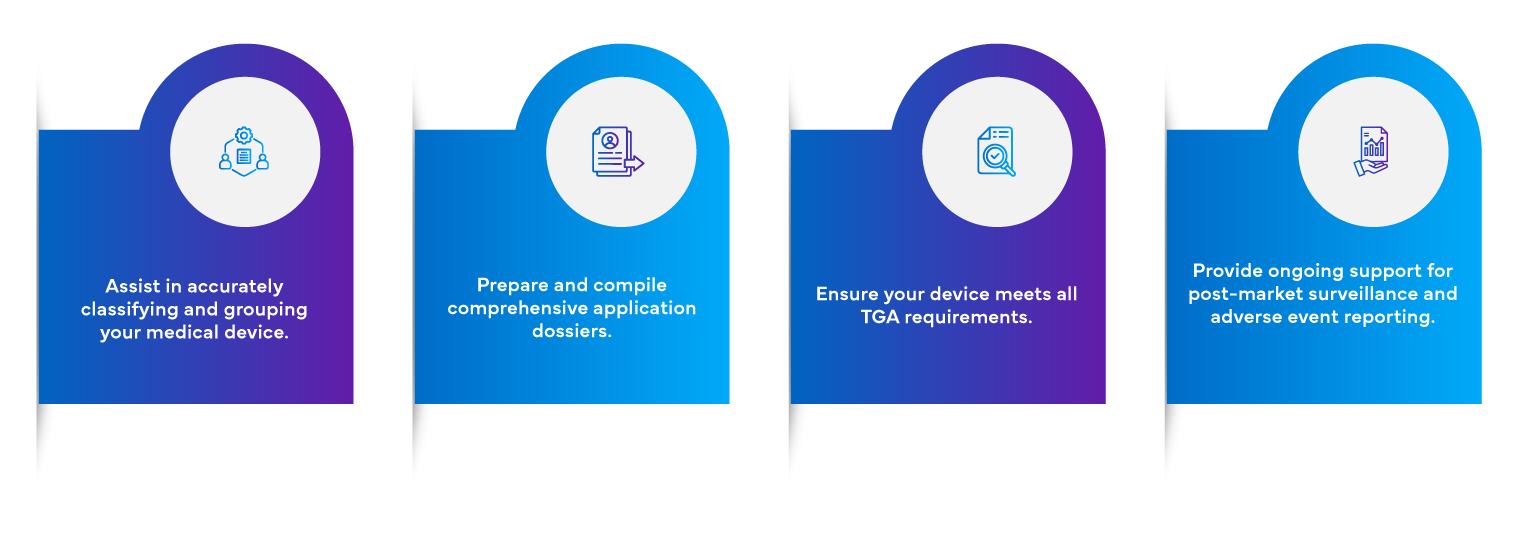TGA Medical Device Classification
The classification system is designed to ensure that the regulatory requirements applied to a device are proportionate to the level of risk associated with its use. In Australia, medical devices are classified according to the level of risk they pose to users or patients. The classification rules for medical devices are prescribed in Schedule 2 and Schedule 2A of the Therapeutic Goods (Medical Devices) Regulations 2002, ensuring a balanced approach to safety and compliance.
Multiple factors are involved while classifying the medical devices in Australia like intended purpose of the device, the duration of the use, degree of invasiveness, device is invasive or non-invasive, the part of the body affected by the device etc. the TGA classification system ranges from Class I (lowest risk) to Class III (highest risk).
Brief overview of the classification levels:
| Device Class | Risk Level | Examples |
| Class - I | Low Risk | non-sterile bandages and manual stethoscopes. |
| Class - II a | Low Moderate Risk | surgical gloves and hearing aids |
| Class - II b | Moderate – High Risk | lung ventilators and infusion pumps. |
| Class - III | High Risk | heart valves and implantable defibrillators. |
TGA Medical Device Grouping System
In addition to classification, medical device grouping plays a vital role in registering the device with TGA. Medical device grouping allows inclusion in the Australian Register of Therapeutic Goods (ARTG). Grouping allows for a set of devices with common features to be included in the ARTG under a single application, which can be more efficient and cost-effective for manufacturers and sponsors.
The grouping of medical devices is based on the following categories
- Kind of device: grouped under a single ARTG entry instead of requiring separate entries for each product. The applications having same sponsor, manufacturer, classification and GMDN can be grouped under a single ARTG entry instead of requiring separate entries for each product
- System: A collection of medical devices that are intended to be used together to achieve a specific medical purpose.
- Procedure Pack: A combination of medical devices packaged together and intended to be used for a specific medical purpose.
It is important for manufacturers and sponsors to correctly classify and group their medical devices according to the Australian regulations. The Therapeutic Goods Administration (TGA) provides guidance and tools to assist in determining the correct classification and grouping of medical devices. Compliance with these regulations ensures that medical devices supplied in Australia meet the necessary standards set by TGA for quality, safety, and performance.
Streamline your TGA Medical Device classification and grouping process with our expert support. contact Freyr's specialists today to ensure your medical device meets all regulatory requirements and gains timely market access in Australia.
Freyr TGA Medical Device Competencies
![]()
TGA Medical Device Classification services![]()
TGA Medical Device Grouping and GMDN Code Assignment services![]()
Preparation of Technical File![]()
TGA Regulatory Submission Expertise![]()
Compliance with Australian Regulatory Pathways
Frequently Asked Questions
The Global Medical Device Nomenclature (GMDN) codes are used to categorize and describe medical devices consistently across global markets. TGA requires manufacturers to assign an appropriate GMDN code to their device for regulatory and identification purposes.
Yes, under certain conditions, devices can be grouped in one application, such as when they are part of a system or procedure pack, or share the same classification and GMDN. However, the rules for grouping devices are strict and must align with TGA’s guidelines.
If a device changes in design, intended purpose, or risk profile, manufacturers may need to reassess its classification and submit a new application to TGA. Lifecycle management and post-market monitoring are critical for ongoing compliance.
Medical Device Regulatory Consulting – Proven Expertise
Why Freyr?

